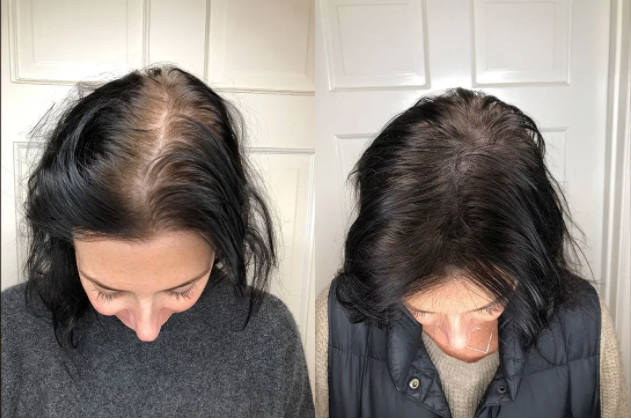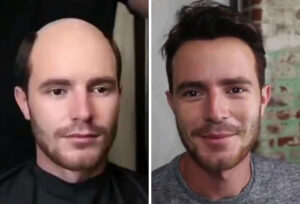You may have already heard of microblading for full brows. Did you know there’s a similar practice for your scalp? This procedure is known as scalp micropigmentation (SMP), which creates the illusion of fuller hair. Micropigmentation is performed using an electric tattoo device.
How does SMP work, and who can benefit from it?
The goal of SMP is to use tiny, layered dots in different hues of black to replicate the look of a shadow on your scalp. This style, referred to as pointillism, is done to create natural-looking depth and definition.
Our skilled practitioner will work to ensure the dots look like a natural hair follicle and blend in seamlessly with your complexion. This process may be useful for people who experience all forms of hair loss. This includes clients with:
- cancer
- alopecia
- thinning hair
- male and female pattern baldness
What’s the process like? So, just how painful is this procedure? The short answer is, it depends. Before the procedure, your SMP practitioner will apply a topical numbing agent to your scalp. That said, it’s good to keep in mind that there may still be some discomfort. However, how much discomfort largely depends on your pain tolerance.
First, you will have an initial consultation. During this meeting, Eldorado hair Restoration will prep you for what to expect and how you should prepare beforehand.
For example, here are some general guidelines:
- Each treatment typically takes between four and five hours.
- How many treatments you need will depend on the amount of scalp getting SMP. Even if it’s only for a small area like a widow’s peak, Cohen says three to four treatments are still needed for long-term retention since SMP is a process of layering color.
- Treatments will be scheduled a few weeks apart.
In the weeks between treatments, don’t go swimming, use steam or sauna rooms, or take extremely hot showers that may cause a steam storm.
Avoid exposing your scalp to the sun for the first four days (wearing a hat is fine). On the fifth day after treatment, you can expose the treated skin to sun for one hour, or 45 minutes if you have very fair skin.
Keep in mind, though, that less sun exposure to the treated area means better long-term retention.
After your final treatment, it’s essential to:
- Avoid swimming, saunas, and steam rooms for 28 days after your final treatment.
- Keep out of the sun for 28 days after treatment. Thereafter, use SPF 30–50 sunscreen.
- Avoid heavy exercise for five days after your final treatment.
- Begin to regularly moisturize the treated area after the fourth day of your final treatment (this is also true between treatments).
How to find the right SMP practitioner for you.Before you decide on an SMP practitioner, it’s crucial to do your homework. Make sure to visit the office where the service will be performed.
High-quality SMP treatment centers should have:
- certification of SMP training
- body art practitioner license on display (depending on state requirements)
- blood born pathogens certification
- county health permit
- clean and sterile environment with a sink
- packaged needles that can be opened in front of the client
- barrier protection during treatment (nitrile gloves, mask, barrier tape, and guards on SMP treatment device)
Be sure to ask the practitioner how many appointments they schedule each day. This kind of service is time-consuming and requires an intense amount of focus. So, if a person is seeing more than four or five clients per day for SMP, that’s typically a red flag. It may indicate the practitioner isn’t giving each client the attention and time they deserve.
Ultimately, it’s essential to remember that SMP is an investment. But if done correctly by a qualified and trained artist, SMP can be a truly confidence-boosting procedure with no downtime.
Contact us today for more information.



